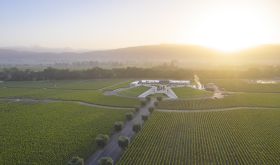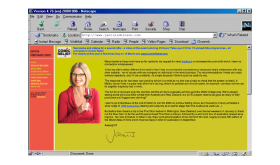A reader emailed that his recent dinner at Medlar in Chelsea, London, was spoilt by constant flashes as the couple at the adjacent table took photos of one another and every dish they were served. This is now an all too common feature of restaurant life.
So, too, is the phenomenon of watching smokers pick up their wine glasses and head outside, between courses, for a nicotine hit, a practice that, ironically, coincides with more and more restaurants' offering long tasting menus that rely on a constant speed of delivery to their seated guests.
As I pondered these things I came to the conclusion that the two individuals who have had the most influence recently on the world's restaurants are neither chefs nor restaurateurs. They are Michael Bloomberg, who as Mayor of New York initiated the ban on smoking in public places, and the late Steve Jobs, whose iPhones collectively snap more pictures of food in a day than the most illustrious food photographer does in a year.
Before attempting to find a 'modus vivendi' for these issues, I spoke to a couple of restaurateurs, William Guidara and Mark Williamson in New York and Paris respectively, and Bruce Poole, chef/proprietor of Chez Bruce in London. Guidara's Eleven Madison Park offers a complex tasting menu; Paris has always been the city where smokers at least look 'chic'; while Poole adopts a particularly holistic approach to his profession.
In fact, it was Poole who raised a novel, but potentially growing, consequence of the smoking ban: how to handle the increasingly popular electronic cigarettes. 'We weren't particularly happy about this when it happened for the first time quite recently', Poole explained, 'because it [the electronic cigarette] looked real and even gave off an admittedly odourless vapour. We chose to do nothing but it caused a few raised eyebrows.'
Williamson spoke for most restaurateurs when he referred to the smoking ban as a 'godsend' that has led to a much healthier environment for his staff and millions saved on redecoration costs. He saved his ire for those smokers who do everything in their power to get smoke into the restaurant by standing in the doorway, under an open window or position themselves carefully upwind.
While Guidara acknowledged that smoking breaks do make the timing of a tasting menu more difficult, he highlighted a far trickier issue for his team: how to handle a solitary smoker at a table of non-smokers. Then the issue, he explained, has to be decided by the table. 'We ask the table whether they would like to continue waiting or do we put the absentee's dish under a cloche?'
The issue of the use of cameras in restaurants is more complex, principally because it revolves firstly around whether they should be allowed at all and then secondly the use of a flash.
All agreed that the small number of their colleagues who choose to ban phones entirely are in the wrong. For three reasons I agree with them. Firstly, restaurateurs make a considerable amount of their revenue from customers celebrating a particular event in their lives – a birthday, a wedding anniversary or a family reunion – so that to ban a brief commemoration of such an event seems mean. Secondly, to argue that it could interfere with the privacy of others seems undemocratic. And, finally, fully aware as I am of some of the far more taxing issues any restaurant manager has to face during the course of a busy working day, to ban this practice outright seems a reflection of weak management. As Poole put it, 'by banning them altogether, we seem pompous and overly serious'.
It is not just the recording of pleasure that is at stake, either. Williamson admitted to 'doing the photo thing too and that any restaurateur would be a fool to knock free publicity', before adding a view that perhaps stemmed from his years serving the philosophical French. On the one hand, he explained, we all believe that 'we eat with our eyes' and therefore it is a professional principle to make every dish look as photogenic as possible. The down side of this is that it becomes increasingly incumbent on every chef to send out dishes that say 'wow' visually.
It is the flash that is the unwanted aspect in the dining room for both Guidara and Poole, as well, I believe, for the vast majority of restaurant goers.
Guidara and his team explicitly ask that their guests refrain from using a flash camera while going out of their way to help their guests preserve the memory of what is an expensive, but excellent, experience (the menu is $195 per person). Poole, who has been responsible for the success of Chez Bruce for the past 20 years, put the relatively recent appearance of the camera and flash into the broader perspective of the scene he is directing. 'We like quite dark, cosy lighting here, which obviously maximises the discomfort caused by the flash of a camera and this is exacerbated wherever the tables are close together, which, given the way rents are going, is increasingly the norm'.
I would argue that flash photography should be banned, cameras permitted, but at the discretion of the management. Williamson ended our conversation, however, by adding that as the behaviour of today's clients has evolved, and the 21st century has brought in what he refers to as the 'Nomadic Diner', someone who cannot sit still for longer than 90 minutes, restaurateurs need to evolve, too.
Someone highly respected within the industry needs to lay down new ground rules for the use of cameras. My first suggestion is that all restaurateurs should upload photos of all their dishes on to Instagram, leaving their customers more time to enjoy the occasion.














